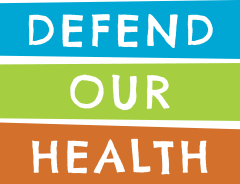People of Color Must Be Protected from Toxic Phthalates, Groups Say
December 10, 2021 |
Feds Must Assess Cumulative Impacts from All Sources of Chemical Exposure
In comments submitted on December 8th, four public health and environmental justice organizations called on the U.S. Environmental Protection Agency (EPA) to formally designate people of color as a vulnerable population that must be protected from unreasonable health risks caused by exposure to the plastics-related chemicals known as phthalates.
More than a decade of monitoring has shown that Black, Latinx, Indigenous and Asian-American communities are more highly exposed to phthalates than white people across the entire U.S population. BIPOC communities are also disproportionately impacted by exposure to toxic chemicals in general.
The groups also argued that under the Toxic Substances Control Act (TSCA), EPA must assess the cumulative impact of exposure to all seven phthalates that are subject to ongoing risk evaluations. Further, the groups argue, the law requires EPA to assess all sources of phthalates, even those that the U.S. Food and Drug Administration has authority to regulate, such as food contact materials, cosmetics, and medical devices.
In a related matter, several of the same groups sued the FDA on December 7th for its failure to take action on petitions filed five years ago asking the agency to ban phthalates in food contact materials such as conveyor belts, plastic tubing, food packaging, and disposable gloves.
“Women of color face unjust health threats from phthalates in personal care products and from other sources,” said Jan Robinson Flint, Executive Director of Black Women for Wellness. “This environmental injustice must end,” she said.
“Black women are often overexposed and unprotected in exposures to toxins and chemicals found in personal care products,” said Dr. Astrid Williams, Environmental Justice Manager at Black Women for Wellness. “We aim to achieve better regulation in this industry.”
“Pregnant women and infants face significant health risks from phthalates, which are worse for people of color,” said Mike Belliveau, Executive Director of Defend Our Health. “Early life exposure to phthalates leads to lifelong health impacts, including an epidemic of declining sperm counts and rising learning disabilities. The feds must end this unjust chemical crisis.”
“Just as exposure to phthalates is not equally distributed across racial groups, neither is breast cancer,” said Amanda Heier, President and CEO of Breast Cancer Prevention Partners. “Black women get breast cancer earlier and have the highest mortality rate. The EPA must help end these inequities by addressing cumulative impacts of phthalates.”
“I am concerned about the harm caused by phthalates to our children and future generations,” said Margaret Yellow Wolf Tarrant, environmental justice organizer with Alaska Community Action on Toxics. “Our Indigenous Peoples face a disproportionate burden from not just phthalate exposures but also exposure to other toxic chemicals. Environmental justice demands that federal agencies end the cumulative impacts of toxic chemical exposures in our communities.”
The groups’ comments were submitted to EPA as part of its ongoing risk evaluation for seven phthalates under the 2016 revisions to TSCA. Under the law, EPA must protect any designated vulnerable group, known as a “potentially exposed or susceptible sub-population,” from “unreasonable risk” associated with exposure from all “conditions of use” of a chemical substance.
EPA has clear authority to restrict the use of phthalates in manufacturing and consumer products. Under Section 9 of TSCA, the EPA can compel other federal agencies, such as FDA, to consider restrictions on phthalate use in products they regulate.
Phthalates are widely used to soften PVC (vinyl) plastics and synthetic rubber used in food contact materials, consumer products, building materials, home furnishings, garden supplies, IV bags and tubing, and many more products. Some phthalates are also used in cosmetics, personal care products and packaging for drugs.
Phthalates are endocrine disrupting chemicals that impair testosterone production and alter thyroid function. In 2014, an expert science panel to the U.S. Consumer Product Safety Commission concluded that 5% of pregnant women and infants are exposed daily to unsafe levels of phthalates that threaten the reproductive health of male babies. In 2021, scientists determined that exposure to phthalates also harms brain development during pregnancy and early childhood.
The comments submitted to EPA were prepared in partnership with the U.C. Berkeley Environmental Law Clinic and its law student team.
